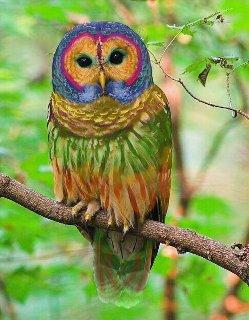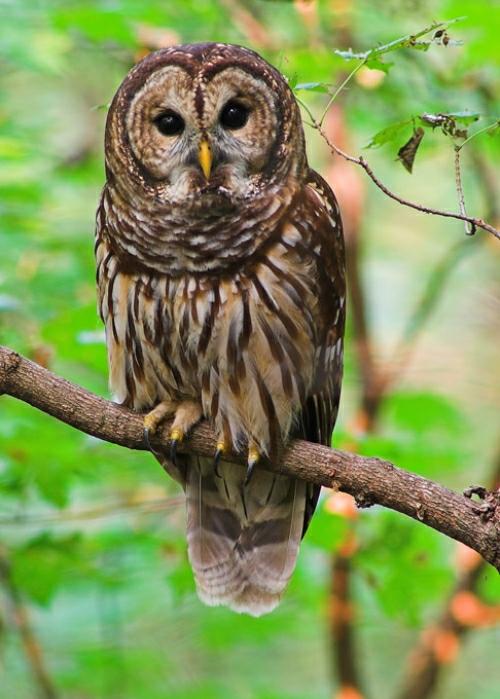

The Truth Behind The Myth Of The Rainbow Owl: Fact Or Fiction?
In a world where remarkable creatures often capture our imagination, the concept of a "rainbow owl" has sparked curiosity and debate. This captivating notion paints a picture of a vividly colored owl that supposedly inhabits the forests of North America and China. However, the reality is not as enchanting as it may seem. As we explore the origins of this myth, we will uncover the truth behind the rainbow owl and its place in both folklore and reality.
Many images and stories of the rainbow owl have circulated on social media, often accompanied by claims about its rarity and conservation status. But the truth is that this so-called species is not recognized in ornithology. Instead, it appears to be a digitally manipulated version of the common barred owl, also known as the "hoot owl." This fascinating transformation raises questions about the nature of wildlife representation in the age of digital media.
Throughout history, mythical creatures have played a significant role in various cultures, often symbolizing deeper truths or moral lessons. The rainbow owl, while captivating, serves as a reminder of the importance of critical thinking and fact-checking in our pursuit of knowledge about the natural world. Join us as we delve deeper into the facts surrounding this mythical bird, revealing the beauty and intrigue of the real creatures that inhabit our forests.
Table of Contents
- Biography of the Rainbow Owl Myth
- Facts About the Rainbow Owl
- Conservation Efforts for Real Owls
- Final Thoughts on the Rainbow Owl
Biography of the Rainbow Owl Myth
The tale of the rainbow owl began circulating in the early 2010s, when a colorful image of an owl began appearing in emails and on social media. Initially presented as a rare discovery, the image quickly captured the attention of nature lovers and the general public alike. However, as the myth spread, so did the questions regarding its authenticity.
Researchers have traced the origin of this image to digital manipulation, where an ordinary barred owl was altered to create the fantastical appearance of a rainbow feathered creature. The phenomenon highlights the ease with which misinformation can spread in our interconnected world, urging us to approach such claims with skepticism.
Personal Details about the Rainbow Owl
| Attribute | Details |
|---|---|
| Name | Rainbow Owl |
| Habitat | Forests of North America and China (fictional) |
| Length | Averaged at 44 cm (fictional) |
| Wingspan | Averaged at 112 cm (fictional) |
| Conservation Status | Not applicable (fictional) |
Facts About the Rainbow Owl
Though the rainbow owl may not exist in reality, it has inspired a wealth of discussions about real owls and their ecological significance. Owls are crucial for maintaining the balance of their ecosystems, preying on rodents and other small animals, thus controlling their populations. In fact, there are numerous species of owls that showcase stunning plumage, albeit not in rainbow hues.
For instance, the barred owl, native to North America, is known for its distinctive brown and white feathers, which provide excellent camouflage in wooded environments. Unlike the mythical rainbow owl, these real owls are nocturnal and play a vital role in their habitats.
Interesting Owl Facts
- Owls are primarily nocturnal hunters.
- They have exceptional hearing and night vision.
- Owls can rotate their heads up to 270 degrees.
Conservation Efforts for Real Owls
While the rainbow owl is a myth, many real owl species face threats due to habitat loss, climate change, and human activities. Conservation efforts are underway to protect these majestic birds and their habitats. Organizations and researchers are working diligently to raise awareness and implement strategies to ensure the survival of various owl species.
Public education is a crucial component of conservation, emphasizing the importance of preserving natural habitats and protecting wildlife. By engaging communities and fostering a sense of responsibility towards the environment, we can make a difference for real owls and other wildlife.
Final Thoughts on the Rainbow Owl
In conclusion, the tale of the rainbow owl serves as a fascinating example of how myths can capture our imagination while reminding us to seek the truth. While it may not have wings of color, the real world is full of remarkable creatures deserving of our admiration and protection.
As we explore the wonders of nature, let us remain vigilant in discerning fact from fiction. By understanding the real stories behind the creatures we encounter, we can foster a deeper appreciation for the biodiversity that enriches our planet.
Embrace your curiosity and continue learning about the natural world. Who knows what other fascinating truths await discovery?


A Woman Claims Her IQ Soared To 220 After Drinking Semen For A Year
Unveiling The Truth: Jaden Smith's Viral Birthday Claim Debunked
Understanding The Hasty Generalization Fallacy In Logic
